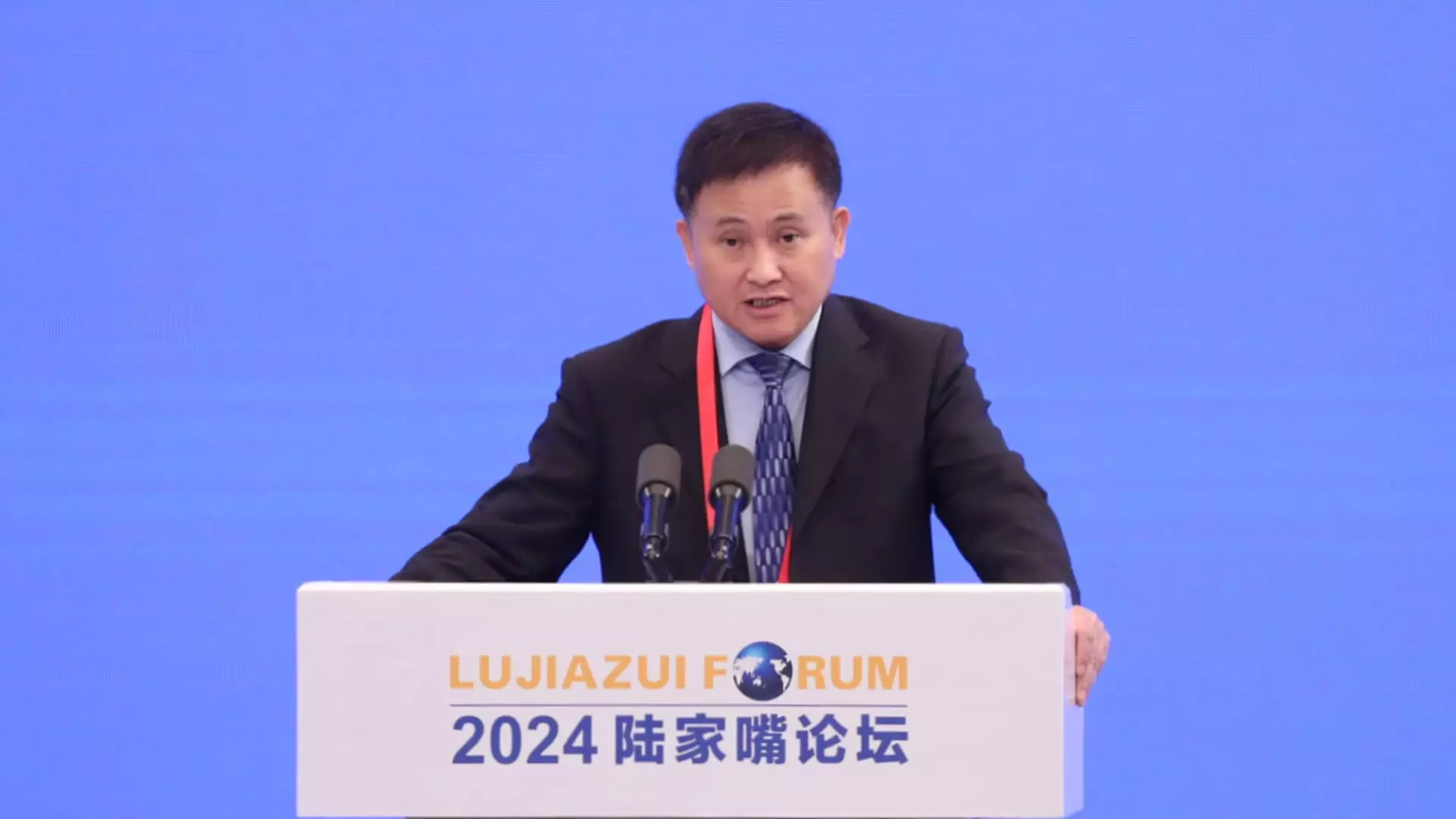China’s financial landscape is shifting as the People’s Bank of China (PBOC) announces a significant reduction in the reserve requirement ratio (RRR) for banks. This decision, articulated by PBOC Governor Pan Gongsheng, aims to stimulate economic growth that has recently encountered significant headwinds. As we delve into the implications of these monetary policy adjustments, a broader understanding of their context reveals both the rationales behind such moves and their anticipated outcomes.
The reserve requirement ratio, an essential tool in the central bank’s arsenal, dictates the percentage of deposits that banks must hold as reserves. By cutting the RRR by 50 basis points, the PBOC is effectively freeing up more capital for banks to lend, which can stimulate investment and spending. This strategic decision corresponds with Pan’s acknowledgment of the economic challenges posed by a slowing growth rate, particularly in the wake of a deflationary environment exacerbated by a cooling real estate sector and waning consumer confidence.
Pan’s remarks indicate that the central bank is poised to implement further cuts to the reserve ratio, with speculation suggesting a potential additional reduction of 0.25 to 0.5 percentage points before the end of the fiscal year. These anticipated moves, paired with a reduction in the 7-day repo rate, signal a proactive approach to monetary easing in light of global economic trends and domestic pressures.
The context within which these changes are taking place is crucial. The recent interest rate cut by the U.S. Federal Reserve has triggered a re-evaluation of monetary policy within China. While the Fed’s adjustment primarily targets short-term growth stabilization, the PBOC is navigating broader structural challenges endemic to China’s economy. The inclination toward easing monetary policy is indicative of the need for a multi-faceted response to stabilize growth against external pressures.
Moreover, Pan’s mention of potentially lowering the loan prime rate adds yet another layer to the PBOC’s monetary strategy. The loan prime rate, which serves as a benchmark for lending rates that influences both corporate and household debt, reflects the broader goal of stimulating domestic consumption. However, the lack of immediate changes to this rate also emphasizes the cautious footing on which the PBOC is operating, balancing stimulus with the need to maintain economic stability and prevent excessive inflation.
The press conference itself marked a rare public display of communication from the PBOC, underscoring the importance of transparency in managing market expectations. Communications from central banks have a profound impact on investor sentiment and economic behavior. By articulating his views on potential future cuts and easing measures, Pan is not only signaling policy directions but also striving to build trust in the PBOC’s commitment to economic recovery.
Yet, the expectation that concrete policy updates will be communicated via the central bank’s website rather than during public events reflects a complexity in managing information in today’s fast-paced financial environment. This approach signifies an effort to maintain a balance between immediate dissemination of crucial information while allowing the central bank the flexibility to maneuver tactically based on evolving economic scenarios.
Despite these announcements, the road ahead remains fraught with uncertainty. China’s economic trajectory is heavily influenced by stagnant consumer demand and a troubled real estate market that shows few signs of immediate recovery. As economists call for more robust fiscal stimulus measures, it raises questions about the effectiveness of monetary policy alone in steering the economy back on track.
The PBOC’s adjustments, while necessary, might not suffice to address the underlying issues plaguing the economy. There is a growing recognition that a comprehensive approach that includes both monetary and fiscal strategies will be crucial for sustainable recovery. As the situation evolves, it will be imperative for policymakers to remain vigilant and responsive to both domestic and global economic shifts.
China’s current monetary easing measures represent both a response to immediate challenges and a long-term strategy aimed at bolstering growth. As the PBOC navigates these pressures, the effectiveness of its policies will depend not only on the adjustment of rates but also on fostering an environment conducive to renewed confidence among consumers and investors alike.


Leave a Reply